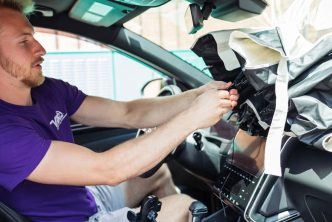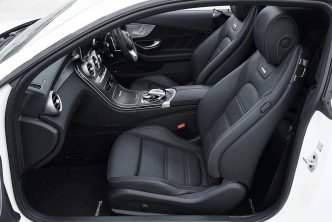We all like to think of ourselves as good, considerate and safe drivers whenever we take to the roads. But how many of us can honestly say we are consistently checking the highway code and keeping up to date with its changes? For instance, there was a considerable change to the code in 2022 that created a hierarchy of road users.
Even accounting for this, there is still plenty of sense in remembering some of the more common laws that never changed and brushing up on areas where you may not even realise you are not complying with the code.
Table of Contents
Tyre tread
One of the most important things any road user should do before going on a journey, but one that gets consistently overlooked, is checking our tyres. It does not matter whether you are using all season tyres, snow tyres, or off-road tyres, the rules will still apply. An area you should be aware of but not might be is tread depth. The legal requirement in the United Kingdom is 1.6mm, a rule that applies to all cars, light trailers, and motorbikes above 50cc.
Flashing headlights
It is safe to assume that most people have flashed their headlights to convey the message that they are allowing another road user to pass safely. But did you know that is actually against the rules of the highway code? Indeed, the only time you should flash your headlights is when letting another road user know that you are there, and you should never flash headlights as a means of intimidating another road user or conveying any other message. And if another road user flashes their lights at you, you should never take this to mean that you are being invited to proceed, always exercise caution when someone flashes their lights.
Loud music
Most of us enjoy driving with the radio on or attaching our phones to Bluetooth systems to play a podcast or our favourite music. But did you know that you can actually be punished for playing music too loudly under the Highway Code? Rule 148 states that safe driving requires concentration, and as such your ability to concentrate on the task at hand, namely driving, could be impaired by loud music. In fact, you could land yourself a hefty £1,000 fine if it is played too loudly if you are deemed to be a nuisance to others or a distraction to other drivers.
Travelling with pets/children
Driving with pets and/or children is, obviously, pretty common but are you aware of what you need to do before hitting the roads? For instance, driving with an unrestrained pet is illegal as they could distract the driver, and Rule 57 states that a seat belt harness, pet carrier, dog cage or dog guard must be used to restrain animals. Failure to keep pets restrained is not only dangerous to the animal but could hit you with a £2,500 fine.
If travelling with children, it is the responsibility of the driver to ensure those under 14 years of age wear seat belts or sit in an approved child restraint. If a child is under 1.35 metres tall (around four feet and five inches), a baby seat, child seat, booster seat or booster cushion must be used.





